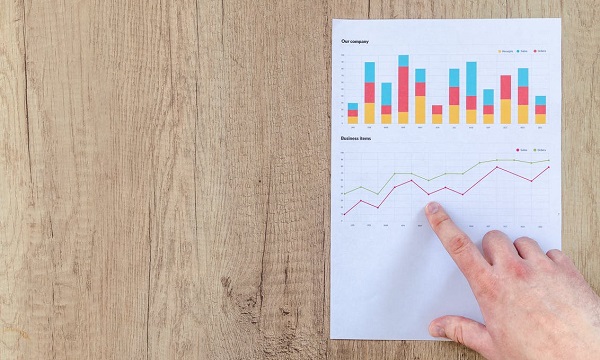
An innovative collaboration project between industry leaders has aims to accelerate the generation and use of green hydrogen on industrial sites.
Wales & West Utilities has secured funding which will see it partner with Dŵr Cymru Welsh Water, Yeo Valley and Hydrostar to establish green hydrogen generation demonstrator plants on industrial sites in South Wales and the south west of England.
The funding has been secured under the Strategic Innovation Fund, an Ofgem programme managed in partnership with UKRI. It forms part of the next stage of the NextGen Electrolysis: Wastewater to Green Hydrogen project and sees the gas emergency and pipeline service, Hydrostar and NGED work with both Yeo Valley and Welsh Water to set up and establish two demonstrators on their sites in the south west of England and South Wales respectively.
Hydrogen is considered green when it is produced from renewable power from wind or sunshine through electrolysis. It is widely recognised that green hydrogen can play a role in energy, transport, heat provision, and hard-to-decarbonise industries, replacing natural gas and other fossil fuels.
As part of the programme Welsh Water will install a 100% hydrogen boiler which will provide both heat and hot water to the office block at one of their biggest wastewater treatment works on Rover Way in Cardiff. It will demonstrate how hydrogen can replace natural gas, using the existing gas network infrastructure, and how renewable electricity from solar panels can provide a self-sufficient power source to large buildings.
Yeo Valley will introduce a 20% hydrogen blend into their existing natural gas boiler at their 60-acre Cannington site to align with the UK Government’s considerations that blending up to 20% hydrogen into Britain’s gas distribution networks is seen as a near-term solution for decarbonising energy.
Wastewater from Yeo Valley’s industrial processes will also be used as feedstock for the electrolyser, with excess oxygen used in their water treatment process, offering a closed-loop solution, further enhancing the environmental and financial benefits. Again, renewable energy from solar will be utilitsed as a power source.
Head of Net Zero & Sustainability at Wales & West Utilities, Matthew Hindle said:
“It is recognised that the UK gas network can accommodate a hydrogen blend as a fuel to power homes and industry, and this project will explicitly seek to demonstrate how self-sufficient renewable systems can benefit major industry customers, providing energy resilience and security.
“Replacing natural gas with hydrogen can help reduce carbon emissions, and using wastewater to make green hydrogen could reduce the costs associated with its production. This project aims to demonstrate this novel green hydrogen technology in real world applications.
“Alongside Hydrostar we are excited to work in partnership with major industry players to establish just how hydrogen can be used at scale to benefit the UK in reaching Net Zero.”
The previous two stages of the NextGen Electrolysis: Wastewater to Green Hydrogen project explored a new technique to produce low carbon hydrogen from wastewater sources.
The team developed innovative membraneless electrolyser technology, which used unpurified wastewater from processes and rooftops to reduce the cost and impact of green hydrogen. It successfully produced 94% purity green hydrogen from nine different wastewater sources, including estuary water, rainwater and seawater, using electrolysis – the process of splitting water to produce hydrogen and oxygen. These stages demonstrated a reduction in both operational constraints and cost to customers in the widescale uptake of low carbon hydrogen.
Ian Hullen, Energy Analyst at Dŵr Cymru Welsh Water, explains:
“As one of the largest energy users in Wales, serving over three million people across most of Wales and some parts of England, we have committed to becoming 100% energy self-sufficient by 2050. We have four large sludge treatment centres – with one being Wales’ only gas-to-grid system – and we continue to look for opportunities to support the energy transition through the production of green gas.
“Our plan is to be 35% energy self-sufficient by 2025 and will see us invest further in low-carbon technologies. The use of green hydrogen in our operations, and the potential to export to the gas grid in the future, will make a significant contribution. By utilising impurified water to create green hydrogen production we will minimize any impact on providing safe clean drinking water to our 3 million customers.”
Ian Gordon, Chief Executive Officer at Hydrostar, added:
“We’re delighted to be continuing our partnership with Wales & West Utilities. The project will establish key evidence for gas networks to help industrial and domestic customers decarbonise their energy systems. It is purposefully designed to provide diversity of customer requirements and equitable distribution of benefits in both near and long terms through 20% blending into the network and the future benefits of 100% hydrogen distribution to all network customers.”
Craig Walkling, Yeo Valley’s Cannington Site Engineering Manager, said:
“We’re excited to see the role green hydrogen could play in helping us meet our sustainability goals and are delighted to be partnering with Wales & West Utilities and Hydrostar for this venture which will use surplus renewable electricity from our new solar panels.
“We already have over 10,000 solar panels on our production sites in the South-west and green hydrogen is an exciting new development in our journey to reduce our carbon footprint. Our focus over the coming decades is to support the positive development of the whole farm environment and supporting regenerative ecosystems.”
This phase of the project will run until 2028.
This project is funded by energy network users and consumers through the Strategic Innovation Fund, a programme from the UK’s independent energy regulator Ofgem managed in partnership with Innovate UK.













